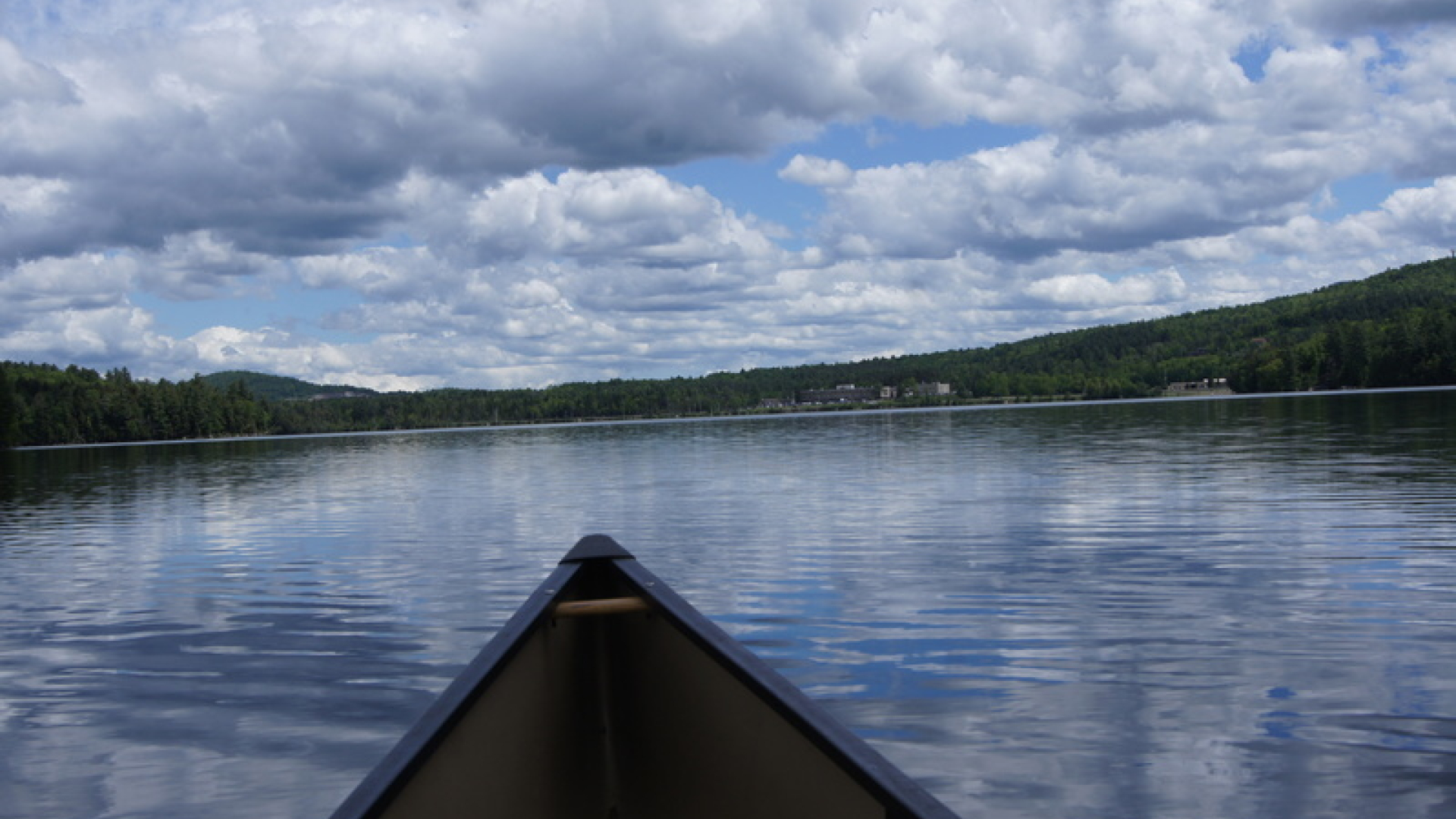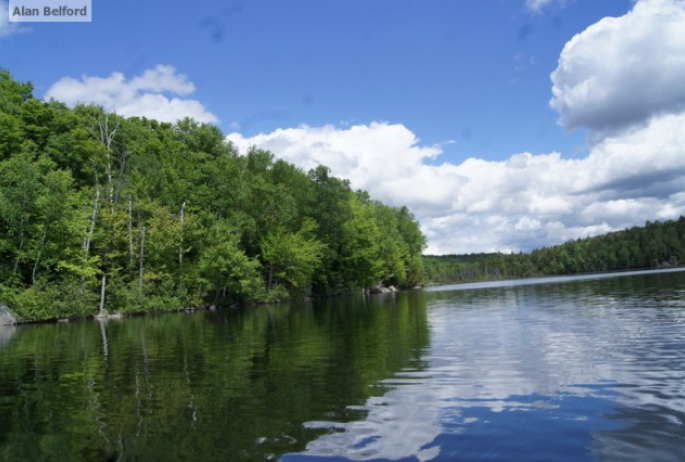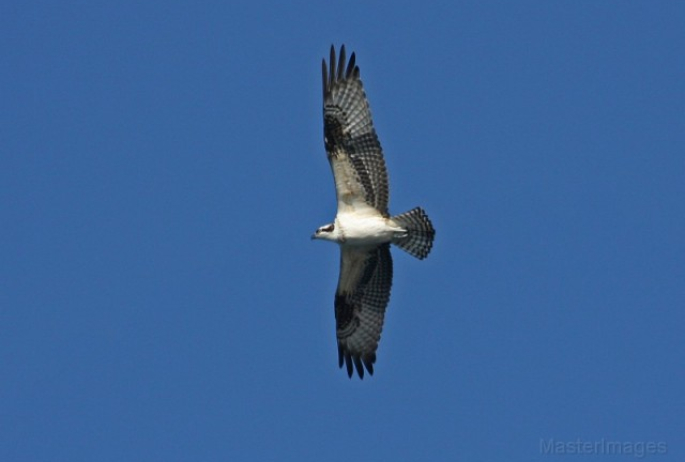This week I was in search of an activity during which I could take advantage of our recent late morning and afternoon breeze. This is the time of year when the black flies come out and the wind may be the best repellent I have found so far. The weather was great and I headed to Lake Colby in Saranac Lake, which is my go-to paddle when my time is limited.
I unloaded my boat from the car and grabbed my dry bag of gear and listened to singing Northern Parula, Nashville Warbler, and Common Yellowthroat before pushing off. I would hear them again as well as many other species of warblers whenever I got near shore.
The breeze on the lake had the duel benefit of being refreshing and keeping away the flies, but it did make me work just a bit harder as I crossed the open lake and I tried to duck behind the lee of land here and there to rest. I didn’t have Wren with me either which meant my bow was light and the wind had an easy time playing with my track across the water.
Resting close to shore where there was little or no wind left me in a conundrum. The calm places near shore also harbored black flies – although not nearly as many as I had encountered earlier in the day. I did find several more species of birds as I hugged the shoreline including Black-throated Green Warbler, Scarlet Tanager, Great-crested Flycatcher, and Black-throated Blue Warbler. Common Loons also called in the distance – they nest on the back side of Colby.
One thing I like about Lake Colby is that the lake is composed of a few arms and bays which are tucked back off the main body of the lake and allow for exploration. These bays also helped block the noise of Route 86 as cars ride along the lake’s eastern boundary. After checking out the first of these arms I started into the second and noticed that my approach had apparently caused a Common Merganser to take wing further down the cove. It landed after a short flight and I chose not to venture far enough to spook it again. The Common Loon which surfaced soon thereafter near my boat seemed a bit less concerned about me and I watched it dive and resurface alternating between popping up far from me and coming in closer.

While watching the loon I noticed an Osprey sitting in a dead snag at the end of the cove. The bird took flight and then dropped into a dive. Just before it hit the water, it pulled up – apparently the fish for which it was aiming had gone too deep. It continued fishing and I stopped paddling to watch it. It dived again – this time hitting the water with a splash. But it came up empty – shaking out its wing and tail feathers in a comical manner as it lifted back off. It dived again. Nothing. And again. No dice. As well equipped as Ospreys are for catching fish, this bird was showing just how difficult a task it is to accomplish. All it had for its trouble was the booty-shaking winged dance it did to shake off the water after each dive. I saw it drop nearly ten times in this manner, but I never saw it catch a fish. It eventually moved out into the main body of the lake to try its luck elsewhere.
I paddled to the opposite side of the cove to listen more closely to a raucous call in the distance that turned out to be young common Ravens – they were evidently nesting nearby. With that I headed back to the boat launch, pausing to look at the Osprey again and a few Herring Gulls on my way back.




